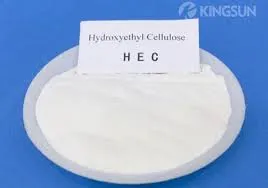
डिसेंबर . 16, 2024 08:27 Back to list
Chemical Composition and Structural Features of Hydroxypropyl Methylcellulose HPMC
Understanding the Chemical Structure of HPMC
Hydroxypropyl Methylcellulose (HPMC) is a versatile and widely-used cellulose derivative that has found its application across various industries, including pharmaceuticals, food, and construction. Its unique chemical structure plays a pivotal role in its properties and functionalities, making it an essential ingredient in many formulations.
HPMC is derived from cellulose, a natural polymer found in the cell walls of plants. The base structure of cellulose consists of linear chains of glucose units linked by β(1→4) glycosidic bonds. The hydroxyl groups (-OH) present in cellulose are instrumental in forming hydrogen bonds, contributing to the polymer's high tensile strength and rigidity. However, to create HPMC, certain groups within the cellulose structure are modified to enhance its solubility and other properties.
Understanding the Chemical Structure of HPMC
The degree of substitution (DS) of methoxy and hydroxypropyl groups significantly influences the chemical and physical properties of HPMC. For instance, an increase in hydroxypropyl groups improves the solubility of HPMC in cold water, making it an excellent choice for applications where heat-sensitive components are involved. On the contrary, higher methoxy substitution results in increased gel strength and enhanced viscosity, which are crucial for specific formulations in the food and pharmaceutical industries.
chemical structure of hpmc

One of HPMC's remarkable characteristics is its ability to form gel-like matrices when dissolved in water. The presence of hydrophilic hydroxypropyl groups allows HPMC to interact efficiently with water molecules, leading to the formation of a viscous solution upon hydration. This property is particularly advantageous in pharmaceutical formulations, where HPMC serves as a controlled-release agent, helping to modulate the release of active pharmaceutical ingredients (APIs) over an extended period.
In addition to its gelling properties, HPMC also acts as an emulsifying agent, thickener, and stabilizer in various applications. In the food industry, it is used to improve the texture and consistency of products like sauces, dressings, and baked goods. The ability of HPMC to retain water also contributes to moisture retention in food items, thus enhancing shelf life.
Moreover, HPMC has garnered attention in the construction sector, particularly in the formulation of dry-mix mortars and adhesives. The chemical structure of HPMC allows it to provide excellent workability, water retention, and adhesion properties, which are essential for ensuring the proper performance of construction materials.
The biocompatibility of HPMC also plays a significant role in its use in pharmaceuticals and personal care products. Its non-toxic nature and ability to create a moisture-retentive barrier make it suitable for use in ocular and topical formulations. This has expanded its application in the realm of modern medicine, particularly in the delivery of drugs that require controlled release and localized effects.
In summary, the chemical structure of Hydroxypropyl Methylcellulose is intrinsically linked to its diverse functionalities and applications. Through the modification of cellulose with hydroxypropyl and methoxy groups, HPMC not only enhances solubility and viscosity but also supports various industrial applications across pharmaceuticals, food processing, and construction. As research continues to explore further applications and improvements in HPMC production, its role in these sectors is likely to expand, proving its significance as a multifunctional excipient and ingredient.
-
Versatile Hpmc Uses in Different Industries
NewsJun.19,2025
-
Redispersible Powder's Role in Enhancing Durability of Construction Products
NewsJun.19,2025
-
Hydroxyethyl Cellulose Applications Driving Green Industrial Processes
NewsJun.19,2025
-
Exploring Different Redispersible Polymer Powder
NewsJun.19,2025
-
Choosing the Right Mortar Bonding Agent
NewsJun.19,2025
-
Applications and Significance of China Hpmc in Modern Industries
NewsJun.19,2025







